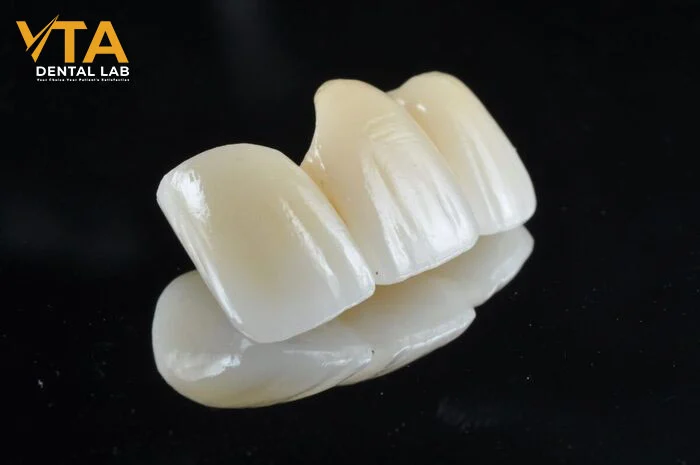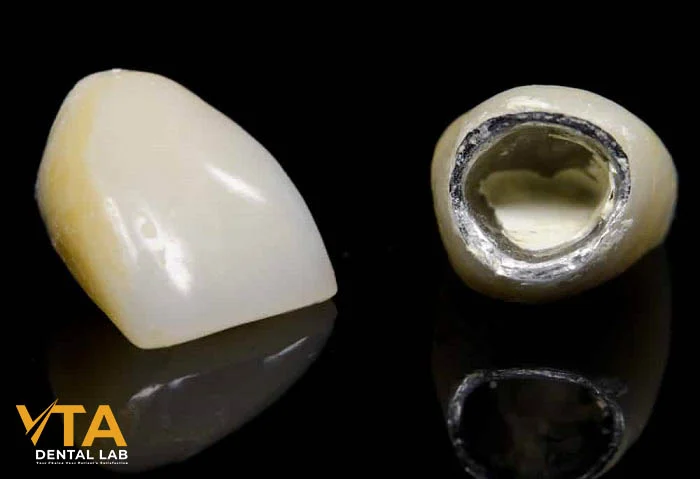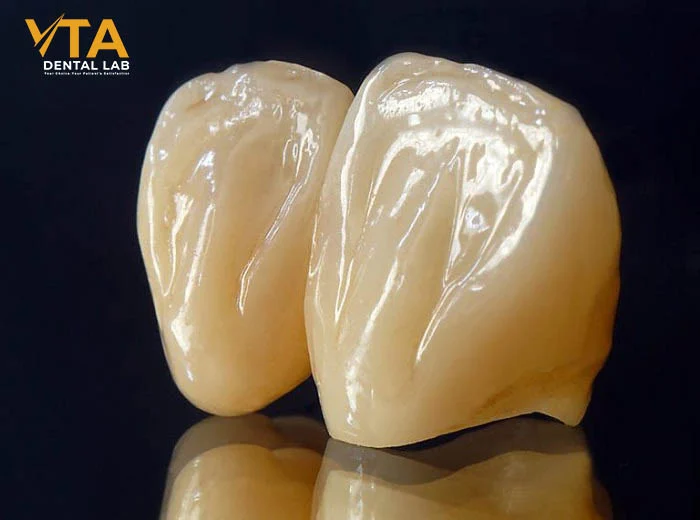Understanding Dental Crown Material: Which One Is Right for Your Patient?
When it comes to dental crown material, choosing the right type can significantly impact the longevity, aesthetics, and comfort of the restoration. Each material brings its own benefits and limitations depending on the clinical scenario and patient needs. Below is a breakdown of the five most common dental crown materials: all-porcelain, porcelain-fused-to-metal (PFM), full cast metal, zirconia, and IPS e.Max.
All Porcelain Crowns
Full-coverage restorations made of all-porcelain material are highly regarded for their natural harmony with existing teeth and superior aesthetics. Porcelain does not conduct heat or cold, meaning it causes less sensitivity to food temperature and does not create discomfort during eating. However, this type of crown is not always the best choice for every patient due to the following reasons:
Porcelain is harder than natural tooth enamel and can potentially damage opposing teeth, especially in patients who grind their teeth. The material is also prone to wear and fracture when too thin or subjected to frequent flexing due to bruxism.

To counter cracking associated with thinness, all-porcelain crowns are typically made thicker than metal-based restorations such as gold. This often requires removing more healthy tooth structure to ensure enough thickness for strength and durability. Additionally, all-porcelain crowns require different bonding techniques compared to metal-based ones and cannot use glass ionomer cement. Some patients may be more sensitive to these bonding procedures, especially during the initial period after crown placement.
These crowns are fabricated in specialised dental laboratories, which takes time. Therefore, patients may need to wear a temporary crown for about a week until the final one is completed.
Advantages of All-Porcelain Crowns
- Offer the most natural and aesthetic appearance, harmonising in size, shape, and colour with adjacent teeth.
- Best suited for anterior restorations.
- Highly biocompatible and metal-free, minimising risk of irritation or allergies.
Potential Drawbacks
- More prone to fracture than other materials.
- May require removal of more tooth structure than necessary to ensure strength.
- Can cause wear on opposing teeth.
May not be suitable for patients with bruxism, sensitivity to bonding techniques or materials, or insufficient healthy tooth structure to support thick porcelain.
Porcelain-Fused-to-Metal (PFM) Crowns
PFM crowns are widely used due to their strength from the metal substructure, combined with the aesthetics of a porcelain outer layer. As the name implies, porcelain is layered and fired over a metal base. This approach provides better aesthetics than full-metal crowns. The metal substructure allows for the use of glass ionomer cement and also acts as a protective barrier in case the porcelain chips.

Common metals used in PFM crowns include gold, silver, and palladium. However, there are several considerations when choosing this material. The metal base can cause the porcelain to appear less translucent, making the crown look less natural in the mouth compared to full-ceramic crowns. Additionally, for anterior teeth, metal margins may become visible at the gum line over time, especially in cases of gum recession.
For patients allergic or sensitive to metal, any crown containing metal alloy may not be a suitable option.
Advantages of PFM Crowns
- More durable than all-ceramic crowns.
- Compatible with glass ionomer cement, which tends to be less technique-sensitive than full-ceramic bonding.
- The metal base provides protection even if the porcelain chips.
Potential Drawbacks of PFM Crowns
- Less translucency due to the metal makes them appear less natural.
- Dark metal margins may become visible if the patient experiences gum recession.
- The porcelain layer can fracture under strong forces.
May not be suitable for patients sensitive to metals, for front teeth, or for molars in patients with severe bruxism.
Full cast metal crowns
Full cast metal crowns are primarily valued for their strength and durability. Common materials used in their fabrication include gold, silver, palladium, nickel, chromium, and others. Among them, gold stands out for its superior durability and minimal reactivity in the oral environment. Gold crowns are also extremely gentle on opposing teeth, making them especially suitable for molars and patients who grind their teeth.

The strength of metal alloys allows us to create thinner crowns, helping preserve more of the patient’s natural tooth structure. These crowns are significantly thinner than porcelain crowns and are n excellent option for restorations in areas with limited space.
Despite their advantages, metal crowns may not be suitable in every case, particularly for patients with a known allergy to metals. It is also important to discuss the colour of the crown with the patient, whether gold or silver-toned, as this affects the choice of alloy. Full-cast metal crowns are typically recommended in areas with high bite forces and where aesthetics are not a concern, such as the posterior (non-visible) region of the mouth.
Zirconia Crowns
Among today’s advanced dental crown materials, zirconia stands out for its exceptional combination of durability, biocompatibility, and aesthetics. Zirconia crowns are fully metal-free, making them ideal for patients with metal sensitivities or aesthetic demands.

There are different types of zirconia used in modern restorations, with zirconia layered and zirconia multilayer being two popular options. Zirconia layered crowns are fabricated with a zirconia core and veneered with a layer of porcelain to enhance aesthetics, especially in the anterior zone. When designed with skill, layered zirconia crowns can achieve lifelike results while maintaining excellent strength and fracture resistance.
On the other hand, zirconia multilayer is a monolithic material featuring natural shade transitions from cervical to incisal, eliminating the need for porcelain layering. This type of zirconia offers both the strength of full-contour restorations and improved visual integration with surrounding teeth. It is ideal for both anterior and posterior crowns, provided that space and case selection are appropriate.
IPS e.Max
IPS e.max crowns are made from lithium disilicate – a modern ceramic material known for its high translucency, natural color, and light-reflecting properties similar to real teeth. This makes it an ideal choice for restorations in the anterior region or any area where aesthetics are a priority.

With a flexural strength of approximately 530 MPa, e.max offers greater durability than conventional porcelain, making it suitable for single crowns, veneers, inlays/onlays, and short-span bridges. Thanks to its homogenous crystalline structure and metal-free composition, e.max eliminates the risk of gum darkening, metal margins, and allergic reactions, while offering excellent biocompatibility with soft tissue.
However, since it is not as hard as zirconia, IPS e.max may not be the best option for high-stress areas such as molars, especially in patients who grind their teeth. In such cases, zirconia crowns are often preferred to ensure long-term strength and performance.
Conclusion
Ultimately, the choice of dental crown material should be based on clinical indications, functional requirements, and patient expectations. At VTA Dental Lab, we are committed to helping clinicians deliver outstanding outcomes by providing expertly crafted crowns in a full range of materials. Our lab combines advanced technology with meticulous craftsmanship to ensure every case meets the highest standards, both functionally and cosmetically.